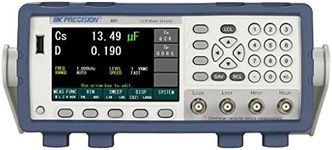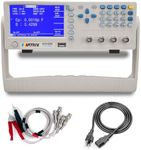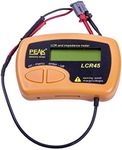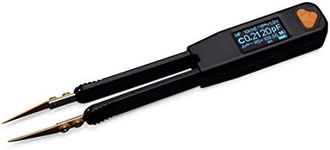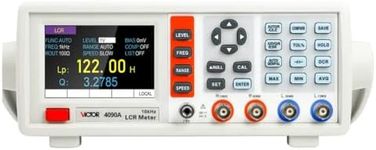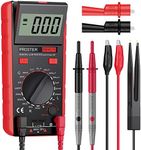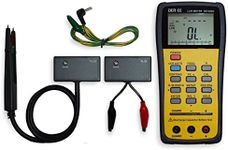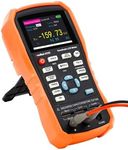Buying Guide for the Best Lcr Meters
An LCR meter is a type of electronic test equipment used to measure the inductance (L), capacitance (C), and resistance (R) of electronic components. Choosing the right LCR meter involves understanding your specific needs and the key specifications that will impact the performance and usability of the device. Here are some important factors to consider when selecting an LCR meter.Measurement RangeThe measurement range of an LCR meter indicates the span of values it can accurately measure for inductance, capacitance, and resistance. This is important because it determines whether the meter can handle the components you need to test. Measurement ranges are typically divided into segments such as low, medium, and high. Low ranges are suitable for small components, medium ranges for general-purpose use, and high ranges for large components or high-precision applications. Choose a meter with a range that covers the values of the components you commonly work with.
AccuracyAccuracy refers to how close the measured value is to the actual value of the component. This is crucial for ensuring reliable and precise measurements. Accuracy is usually expressed as a percentage, with lower percentages indicating higher accuracy. For example, an accuracy of 0.1% is better than 1%. If you need precise measurements for high-quality or critical applications, opt for an LCR meter with higher accuracy. For general or less critical tasks, a meter with standard accuracy will suffice.
Test FrequencyTest frequency is the frequency at which the LCR meter applies the test signal to the component. Different components may behave differently at various frequencies, so having a range of test frequencies can provide more comprehensive measurements. Common test frequencies include 100 Hz, 1 kHz, and 10 kHz. If you work with components that operate at specific frequencies, choose an LCR meter that can test at those frequencies. For general use, a meter with multiple test frequencies is more versatile.
Display TypeThe display type of an LCR meter affects how easily you can read and interpret the measurements. Common display types include LCD and LED screens. LCD screens are generally easier to read in various lighting conditions and can show more information at once, while LED screens are bright and clear but may be harder to read in bright light. Choose a display type that suits your working environment and personal preference for readability.
ConnectivityConnectivity options, such as USB, Bluetooth, or RS-232, allow you to connect the LCR meter to a computer or other devices for data logging and analysis. This is important for documenting measurements and integrating the meter into automated test setups. If you need to record and analyze data frequently, look for an LCR meter with suitable connectivity options. For occasional use, basic connectivity may be sufficient.
PortabilityPortability refers to the ease with which you can transport and use the LCR meter in different locations. Portable LCR meters are typically smaller, lighter, and battery-operated, making them ideal for fieldwork or on-site testing. Bench-top models are larger and may offer more features but are less convenient to move around. Consider where and how you will use the meter to determine whether portability is a key factor for you.
